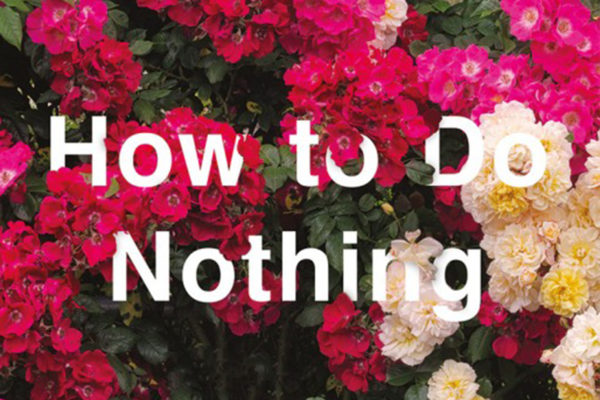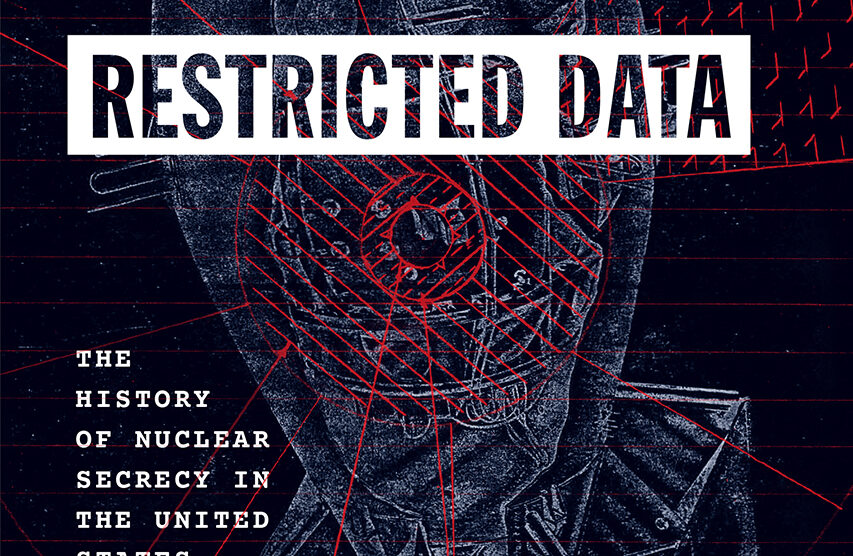Science and Technology Beyond Sin or Savior
A Review of How to Do Nothing
By Eva-Maria Swidler
Volume 22, number 2, Envisioning and Enacting the Science We Need

In recent years it has become increasingly clear that capitalism is not just a system of wage labor, but a system that thrives by exploiting and extracting value from labor through any means necessary: gigging subcontractors, interns, prisoners, slave labor. There is a new, sprawling literature exploring the dimensions of capitalism, while capitalism itself generates new forms. The expansion of unwaged forms of employment means that the direct, in-person control over labor processes that characterized factory work is becoming more erratic. No one sets an assembly line pace for workers on TaskRabbit. Instead, control over the intensity of work has found other means. People are paid at piece work rates that are exquisitely calculated and parsed to maximize output. Employees are surveilled with cameras, keyboard stroke counts, email monitoring, and recorded phone calls.
Out of the workplace, car insurance companies use telematics (also known as spying) to adjust your insurance rates, car rental companies use in-vehicle devices to track customers for compliance with contracts, and advertisers dun you according to where your phone GPS tells them you are. In contemporary lingo, data is being used to optimize prices, costs, and investment decisions. Our current tech dystopia also includes extravagant non-market oriented information-gathering like ankle monitors strapped onto teenagers by high schools or covert classroom cameras watched by supervisors and parents.
Capitalism is also enclosing realms few of us could have conceived of as profit-producing, like sleep, like the night sky, like childhood, like our interactions with each other on social media, like attention. It is becoming clearer and clearer that capitalism isn’t just about the classic Marxist analysis of production, in which profit is extracted from the process of creating the things we need, nor is it even about creating new needs; it is about opportunistically extracting profits in any way possible from anything that exists.
It’s no surprise that more and more people are rethinking the classic leftist assumption that engaging with bosses in the workplace is the only logical form of struggle against capitalism. Activists have realized that the battle is not just about bread and butter issues for workers, or even about worker control over a factory. The totalism of capitalism as a way of being in the world, of interacting with others, a way of sleeping at night and of pacing a day, of creating a certain kind of self through all our activities and interactions, is more and more evident.
Of course capitalism has never been confined to the arbitrarily defined realm called “the economy.” It, like all other “economic” ways of organizing and meeting people’s material needs, is an entire social formation, generating or molding personal relations, family structures, and culture. But it seems as though its intentional invasion of personal consciousness and internal life—enclosing it and shaping it through advertising and mass compulsory education, then mass media, and finally the ironically named social media that is actually owned and run by corporations—might be something new. In the wake of this new era, this year’s book How To Do Nothing: Resisting the Attention Economy, by Jenny Odell, has struck a chord.
Several other recent books have explored different facets of capitalism’s purposeful venture into the intimate life of the individual. Tim Wu’s The Attention Merchants (2017) chronicles a timeline that starts with the enclosure and commodification of the social commons of human interactions by the appearance of print advertising in public newspapers and broadsheets. Next came the invasion of the individual household by commercial messages on radio and then television, displacing conversation and domestic life, and finally an enclosure of the realm of friendship and individual human communication through things like Facebook and Twitter which regulate, shape, mete out, and parasitize interpersonal relationships. Placed at the end of this longer historical trajectory, social media’s commodification of friendship is just a (if not the only) logical next step on a path embarked on over a century ago.
Other participants in this conversation include Jonathan Crary’s 24/7: Late Capitalism and the Ends of Sleep (2014), which proposes that sleep is the only refuge for many people from the capitalist assault on attention and the senses (which would explain exactly why capitalism is so very against us sleeping). The problematically mainstream but still very insightful Reclaiming Conversation: The Power of Talk in a Digital Age (2016), by a psychologist of the non-biological, humanist tradition that has practically died out, examines the sense of self that is created or fails to be created by young adults in what the author, Sherry Turkle, calls the “digital age.” Even more recently, Malcolm Harris’s Kids These Days: Human Capital and the Making of Millennials (2017) provides a far more radical, albeit less internally focused, account of life under this regime in which interior lives themselves are for sale, creating a mental and emotional life startlingly different from the one that people experienced only a generation ago.
In this totalistic environment of capitalism in our homes and in our heads, interest in the last couple of decades has not surprisingly turned even more strongly to the creation and re-creation of economic, cultural, social, and mental worlds outside the spheres of direct capitalist control. The waning interest in Leninism and Maoism, and the increasing interest in anarchism and various forms of libertarian communism, reflect a growing feeling that fighting directly against capitalism in the workplace means fighting on terms that capital has set, and thus being shaped by that capitalist totality. Instead, a radical left prescription for disengagement, turning away and walking away, building independent realities, has surged. Refusal and noncompliance rather than more active confrontation are gaining currency as mechanisms of revolt, inspired by the feeling that face-on resistance is a time sink, merely occupying our mental spaces with their agenda.
Of course a thread of rebellious and relatively self-sufficient working class subsistence cultures has always existed, from masterless men, bandits, and pirates to the hobos of the Great Depression. Today’s slackers, raised in a society more cut off from householding activities, have found it a more unfamiliar and difficult task to self-provision, but the recurrent forms of back to the land or DIY over the decades incarnate this impulse. Anti-capitalism explicitly frames most of these movements today, as it certainly did at many points in the past as well, and for many now it is preferred to a more reactive strategy; taking stock of the odds of winning in struggles over issues, Malcolm Harris, in Kids These Days, says, “The only way to win is not to start.”1
Such desires for a new world beyond the grasp of capitalism travel by different names and in different forms: homesteading, back to the land, commoning, DIY, unschooling, steady state and degrowth economies, and the subsistence alternative. Conversations about the economic value of caregiving and care work or the “craft of use” and maintenance, rather than incessant production, proliferate, and an impetus for not only economic independence but also for cultural and mental independence is rising. All these movements share alternative ways of organizing economic production (labor to meet material needs), but also center creating an independent culture: music, stories, art, and forms of conviviality.
While oppositional world building like this is as old as hierarchy itself, from folk cultures to workingmen’s circles and labor choruses to communes and squats, what is newer on the left today are forms of resistance that use a radical analysis of the capitalist attention economy, an analysis that centers around the interior life of the individual but attempts to incorporate that focus on the self within a larger social analysis of how the self is formed.
How to Do Nothing: Resisting the Attention Economy, which its author, Jenny Odell, describes as an activist book disguised as a self-help one, is the latest contribution to this genre of advocating, as Paul Goodman famously said, “living as if we had won.” Odell calls her approach “resistance-in-place,” asking, “What would ‘back to the land’ mean if we understood the land to be where we are right now?” She defines “doing nothing” as more than the idleness Bertrand Russell praised in his 1932 essay of that name (“In Praise of Idleness”) or the right to laziness that Paul Lafargue defended in his 1883 pamphlet of that title (The Right To Be Lazy), but specifically as doing nothing that capitalism can appropriate. Doing nothing includes not laboring but also encompasses refusing to give attention, to offer up personal relationships, or to bare the self to digital miners. We might say that Odell expounds an expanded form of work resistance, both eschewing classical forms of labor and also rejecting participation in any activity that capitalism can identify and measure. Doing nothing means living in a state of a sort of intentional opacity or illegibility to capital. Such a way of life, of resistance-in-place, simultaneously denies fuel to capitalism and creates the time for us to do something else, including stopping to listen and reassemble ourselves.
The strength of a self-help approach such as Odell’s is a focus on the individual that allows the reader to imagine immediate steps to take, a concrete life to aspire to, and a sense of efficacy. The book’s title and subtitle allure with their promises of proposed personal action, and the text itself does deliver some sharply insightful descriptions of a daily cultural milieu we have often come to take for granted, while offering up tantalizing, almost “how-to,” chapter titles such as “Surviving Usefulness,” “Anatomy of a Refusal,” “Exercises in Attention,” and “Restoring the Grounds for Thought.” But the limitation of this strategy is the weakness of the book, as well: in a desire to help people understand their own realities and make their personal strategies, the book occasionally refers to, but itself largely lacks, a larger analytical frame of capitalism and what an anti-capitalist social transformation might yield. In fact, I’d recommend reading this book in tandem with Harris’s to add a more political understanding of our zeitgeist, and with Turkle’s for a deeper interpersonal insight.
But what does resistance-in-place as a cultural understanding and political strategy mean for creating the science we need? With the individual at the center of her analysis, Odell has nothing explicit to say about an overall science agenda, but her work, as well as that of the many others concerned with the social construction of the self and the attention economy, can help us set some higher level priorities and principles for a vision.
This book revolves around the creation, cultivation, and defense of the self; on the most fundamental level, not raised in this book at all, one piece of a vision of the science we need might include a reconception of psychology, the discipline which analyzes the self, not as a science, as the American Psychological Association does, but as a field exemplifying the inseparability of social studies, biology, and humanistic thought. After all, what is the self if not social, biological, and human all at once, a combination of history, genetics, social location, ethics, biochemistry, and will? Psychology’s current emphasis on quantitative methods of scientific research and the continuing attraction of neuroscience as the field capable of explaining humanness beg for critique.
Turning to the science that is explicitly raised in How to Do Nothing, as an artist Odell is particularly interested in questions of design, whether of landscape, public space, or computers. She ponders to what extent humans are directed by design and to what extent are they able to resist it. She wonders how we approach attempts to substitute design for explicit political processes and whether resistance-in-place means a redesign of our places. Since design is another word for the creation of technology, science is quickly implicated in these conundrums. As a specifically digital artist, which means that she is, as she says, “someone who gets invited to tech conferences but who would rather be out bird-watching,” and as someone whose work and teaching often revolve around computers, Odell is very specifically focused on, and perhaps even unduly preoccupied with, the roles of different forms of digital technology in creating and possibly resisting the attention economy, as her book title advertises she hopes to do.
Sections of Odell’s book examine the design of electronic interfaces that captivate and compel and addict for the purposes of monetizing, and she describes at some length pre-internet, community-based computer programs and muses about the possibilities of local digital networks, or “local meshes.” Sherry Turkle’s work on conversation and interiority pursues this line as well, and both authors propose computer interfaces based on very different principles than we see on our screens today. In contrast to so-called persuasive or addictive design, featuring for instance a bewitchingly irregular delivery of active notifications accompanied by bright colors and insidious numbers, computers could be powerful yet relatively passive tools (like books!) that allow the user to control pacing and browsing, and to pay deep attention at will. Perhaps another part of this vision for the science (and technology) we need might encompass the computer science at the foundation of a redesign of the digital world—social media, the internet, phones—a design that focuses on clarification and focus and attention rather than distraction, that sets priorities of making connections that enable democratic and egalitarian ends rather than profit-making, that in effect de-economizes attention. In short, computer science might create platforms that do not advance enclosure and capitalist ends. Computer science might, as part of that effort, propose a return to simpler tools, which leave more to the user and less to the tool, to facilitate an Ivan Illich kind of conviviality rather than a modernist vision of progress.
Against this proposal, we might pose The Cultural Logic of Computation (2009) by David Golumbia, a man who spent ten years as a computer programmer. Golumbia argues that while computers emerge from their cultural and historical circumstances and while programming may be malleable, all computers have inherently centralizing characteristics and a constant tendency to concentrate power. Additionally, he sees computers as problematic in their prioritization of the visual over other senses and in their psychological effects over time on children. But, while quite cognizant of the power of computers, Golumbia refuses a technological determinism that would lay our problems at the feet of computers themselves. While computers and their programs carry the imprint of a social formation that is built on hierarchy and power, computers themselves are only tools. We should be wary, Golumbia says, of the proposition that fixing the technology of computers will fix social ills. “(T)he best solutions to our pressing social problems lie in the social fabric itself and in social action, and less than we may imagine via computational transformation.”2
Rather than blaming computers, we should point at those who create that technology and at the anxiety-filled social context that drives people to retreat to the digital world as a refuge. Turkle argues that believing young people are addicted to the digital world prevents us from seeing the painful reality that youth are not drawn to their phones so much as they are fleeing the world around them. I agree with Odell and many others that we do need a new technology, and we do need a new science. We need a science that can create tools designed to further the ends of humanity and not capital. We need a computer science that serves human connections and community, not a science bent on most effectively capturing our attention and feeding it into the maw of capitalist profiteering. We need a humanist psychology that tries to understand the mind and the self in non-reductionist terms, not a neuroscience deployed in the service of marketing. But perhaps what we need most is the reminder that while a new science can serve as a tool for what we decide we want to achieve, it will not cure us from distraction nor will it enable us to attend. In short, science is not the cause of our problems and neither is it our savior; science is just a part of culture we need to reclaim for our own ends.
How to Do Nothing: Resisting the Attention Economy
Jenny Odell
Melville House
© 2019
256 pages
About the Author
Eva-Maria Swidler spent a couple of decades as a nurse, nurse-midwife, and nurse-practitioner before receiving a PhD in world environmental and agricultural history. She currently teaches history and a variety of interdisciplinary courses while writing and publishing, most recently on political economy, adjunct labor in the academy, and radical pedagogy. Her current research investigates new definitions of capitalism, subsistence economies, and alternative pedagogy in higher education.





